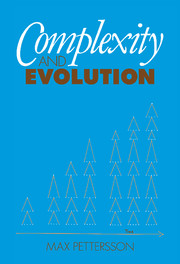Book contents
- Frontmatter
- Contents
- Foreword by Joseph Needham, FRS
- Preface
- Acknowledgements
- 1 Natural and other hierarchies
- 2 Major integrative levels
- 3 Some logarithmic forms of display
- 4 Physical range of integrated natural entities
- 5 Biological range of integrated natural entities (first part)
- 6 Biological range of integrated natural entities (second part)
- 7 Social range of integrated natural entities
- 8 Human societies (first part)
- 9 Human societies (second part)
- 10 Acceleration in evolution
- 11 Further allied accelerations
- 12 Aspects of number
- 13 Aspects of mass
- 14 Positive skewness
- 15 Quantitative conclusions
- Bibliography
- Index
14 - Positive skewness
Published online by Cambridge University Press: 18 January 2010
- Frontmatter
- Contents
- Foreword by Joseph Needham, FRS
- Preface
- Acknowledgements
- 1 Natural and other hierarchies
- 2 Major integrative levels
- 3 Some logarithmic forms of display
- 4 Physical range of integrated natural entities
- 5 Biological range of integrated natural entities (first part)
- 6 Biological range of integrated natural entities (second part)
- 7 Social range of integrated natural entities
- 8 Human societies (first part)
- 9 Human societies (second part)
- 10 Acceleration in evolution
- 11 Further allied accelerations
- 12 Aspects of number
- 13 Aspects of mass
- 14 Positive skewness
- 15 Quantitative conclusions
- Bibliography
- Index
Summary
At a given integrative level are there only a few lightweight members, many middleweight members, and only a few heavyweights? That is the kind of symmetrical or ‘normal’ distribution which is often encountered or assumed in the study of statistics. Or will some or all of the integrative levels show some other kind of distribution?
Social range
Level 9: Societies of sovereign states
For plotting the diagram of Fig. 14.1 the information used was from the 1971 data sheet of the Population Reference Bureau in Washington. The conspicuous result is that about three-quarters of all states consist of less than 20 million people. These include for instance Sweden, Switzerland, Sudan, Somalia, Senegal, Syria, Saudi Arabia, Singapore and El Salvador, to mention just a few.
Most of the other quarter have populations between 20 and 200 million, including for instance the United Kingdom, France, Germany, Spain, Italy, Egypt, Canada and Japan. Only the United States, Russia, India and China had populations in the range beyond 200 million. So the long thin tail to the right of Fig. 14.1 is hardly to be distinguished from the zero baseline; and for that reason the baseline itself has not been drawn in. (In recent years the population of China has of course grown to more than 800 million, indeed by 1990 to more than a thousand million; and India itself might reach that population by the year 2000.)
The vertical axis shows the relative frequency or number of nations along different sections of the horizontal scale.
Information
- Type
- Chapter
- Information
- Complexity and Evolution , pp. 123 - 130Publisher: Cambridge University PressPrint publication year: 1996
